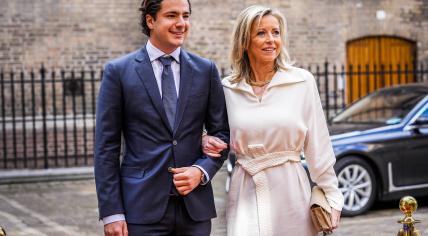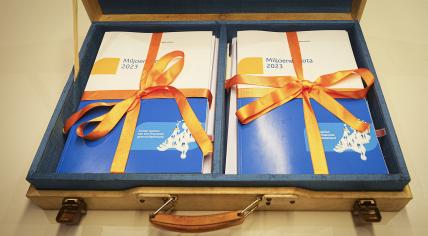
Politicians draw attention to Ukraine, sustainability with their Budget Day outfits
Like every year on Prinsjesdag, politicians use their outfits to send a message. Defense Minister Kajsa Ollongren, for example, is wearing a dress and necklace by a Ukrainian designer. She wants to pay tribute to the women of Ukraine. “Their resilience and perseverance in wartime are an inspiration to us all.” Parliamentarians and their guests are on their way to the Koninklijke Schouwburg, where the King will deliver the speech from the throne.
Parliamentarians are also linking with current events. Several GroenLinks MPs, for example, are going for sustainability. Lisa Westerveld is wearing a dress from Makrtplaats, and Kauthar Bouchallikht is wearing trousers from the clothing loan library. Suzanne Kroger has an outfit from Ketting clothing exchange, a neighborhood initiative that allows neighbors to exchange clothes. Westerveld and Kroger had their hair styled by hairdressing students.
Ester Ouwehand, leader of the party for the animals PvdD, draws attention to the oceans. Her dress is second-hand and edited by the textile artist Mary Poppelier. She wears a sash with the text “Hoezee! Hoezee! Hoezee!”
D66 MPs like Kiki Hagen, Fonda Sahla, Jeanet van der Laan, and Jorien Wuite also convey a message with their outfits. Hagen has a shirt and skirt made of former bedding. She is committed to a cleaner environment and a circular economy. Sahla is committed to “equal opportunities for all” with a dress featuring typical Moroccan accents.
Van der Laan, a former football player, wears a dress made by clients of the Leontienhuis, an initiative of former top athlete Leontien van Moorsel. People with an eating disorder can go to this house for help with their recovery. And Wuite wants to honor her Sint Maarten ancestors with a kimono with blue beads. This kind of bead was a means of payment for enslaved people on Sint Maarten. After gaining their freedom, they threw the beads into the ocean.
The very first suitcase used on Prinsjesdag has been included in the Canon of the Netherlands and is now part of Dutch heritage. The briefcase is one of three key pieces from the Tax & Customs Museum collection that are now part of the Canon.
In 1964, the then Minister of Finance Piet Lieftinck presented the national budget in the briefcase for the first time. In 1848 the Constitution stipulated that a budget must be established every year. The briefcase was selected for the Canon because it tells one of the stories of the Constitution, the organization said.
Lieftinck sent one of his officials out to buy a briefcase. They bought it for 1.70 euros at Leerhandel van de Broek on Laan van Meerdervoort in The Hague and applied the words “DERDE DINSDAG IN SEPTEMBER” (third Tuesday in September) in gold letters. Later, the text was painted with gold paint because the letters were peeling off. This briefcase was used until 1964.
Reporting by ANP


